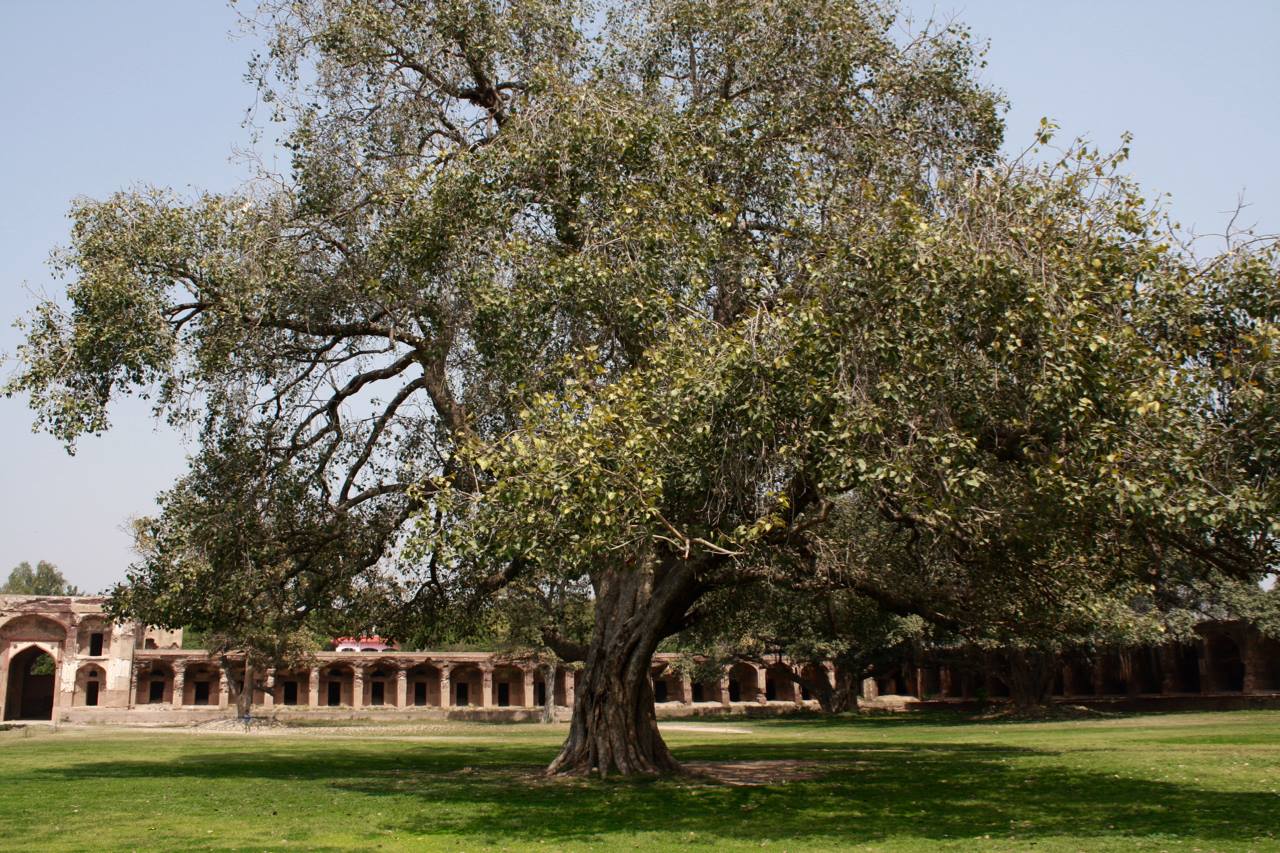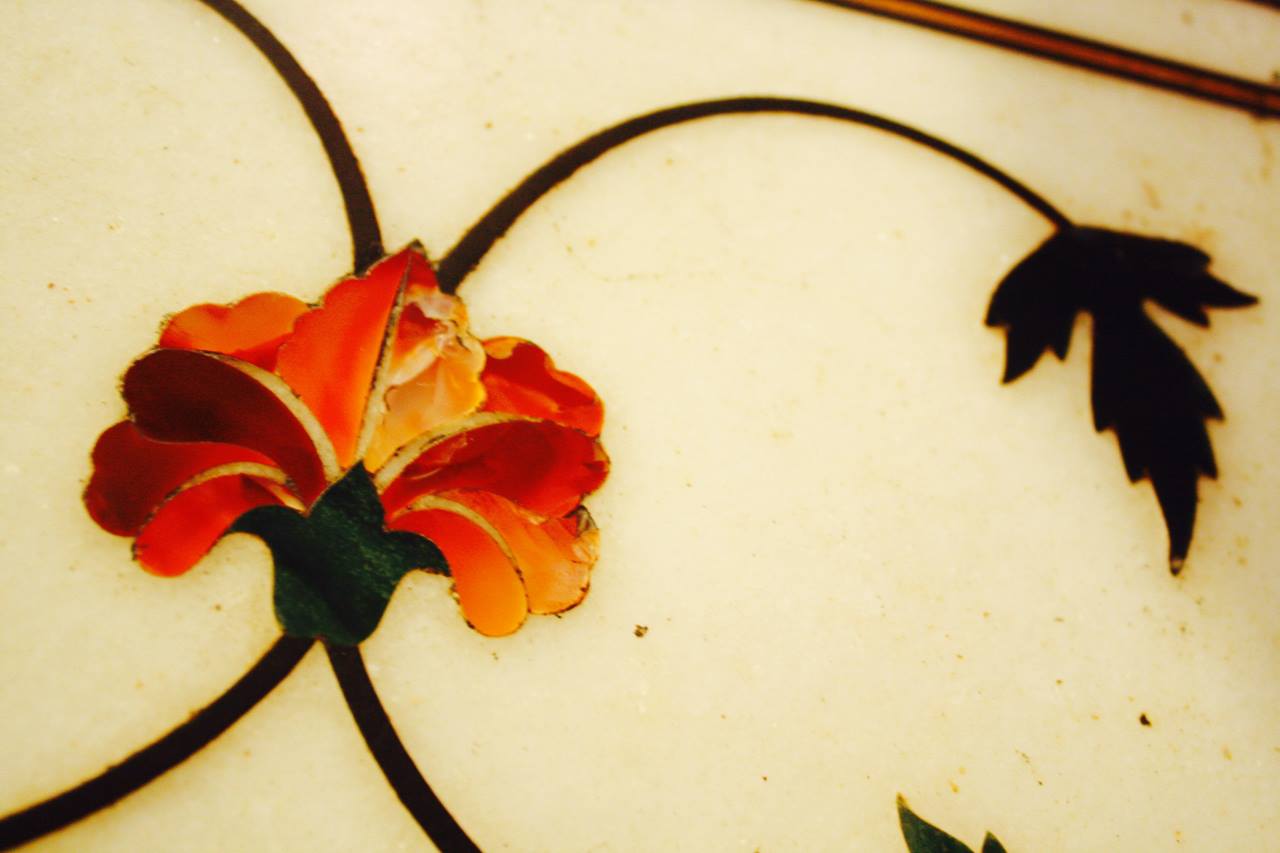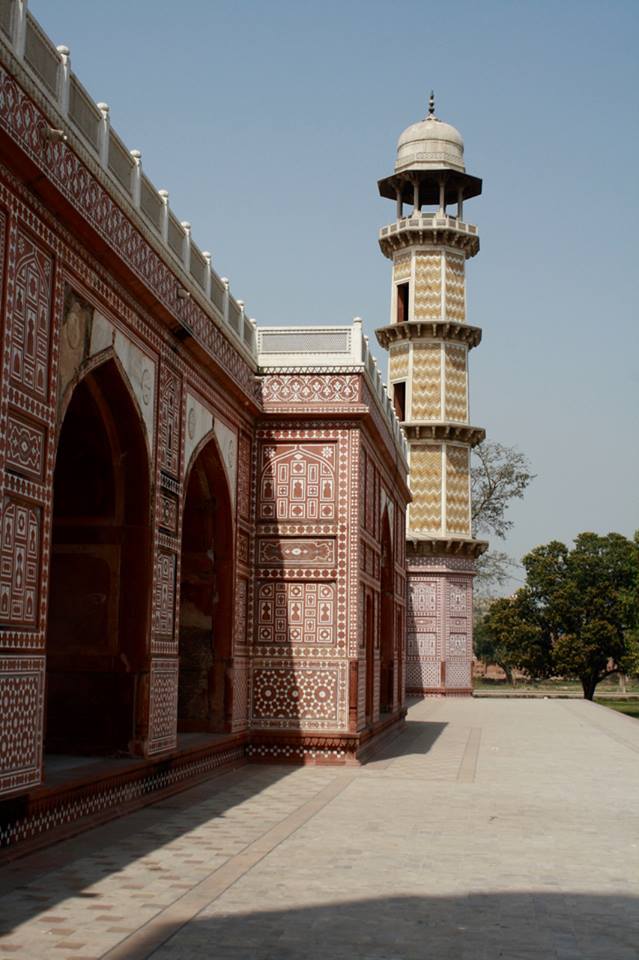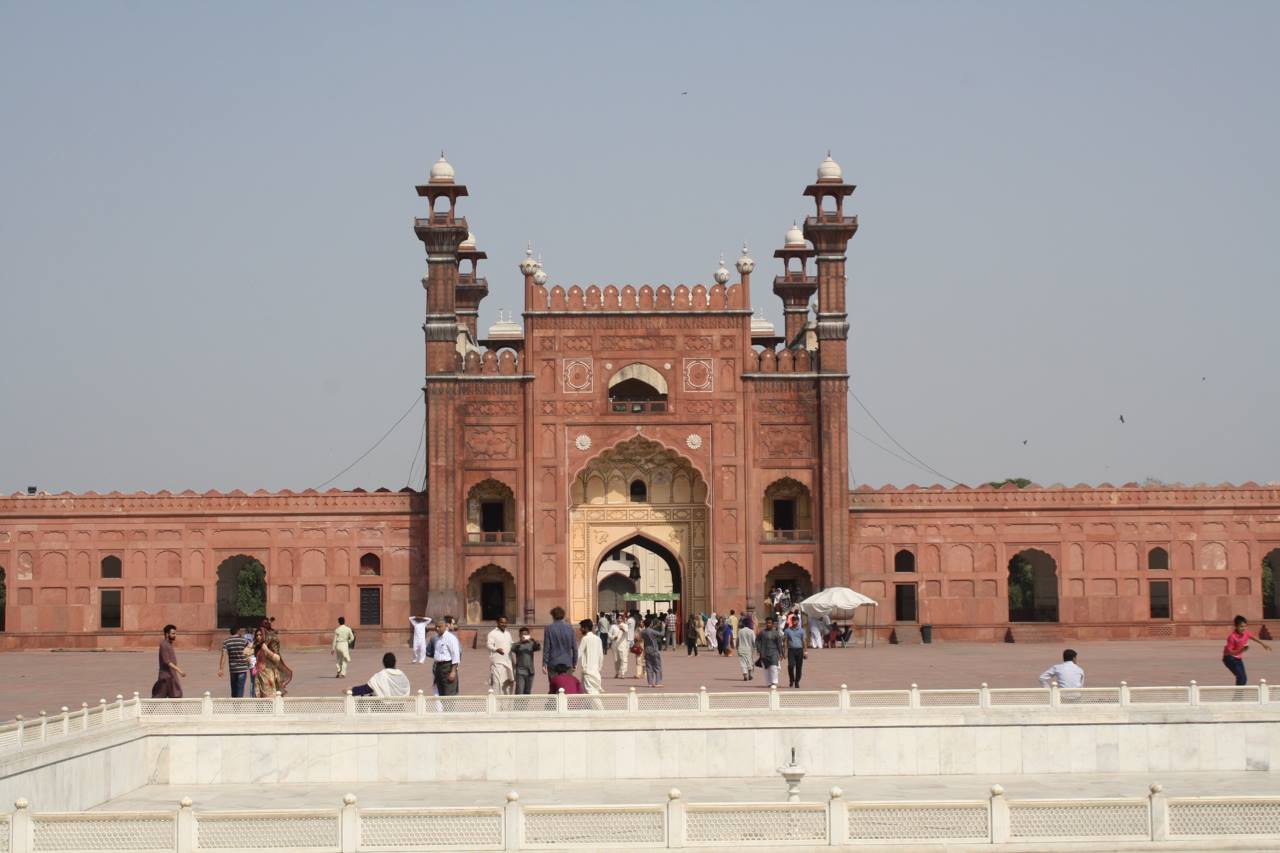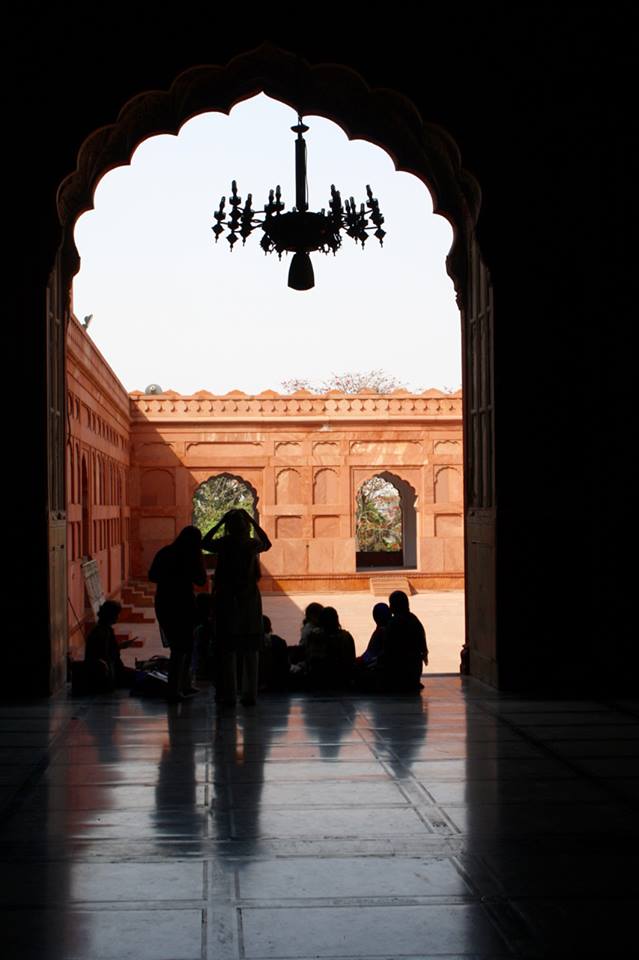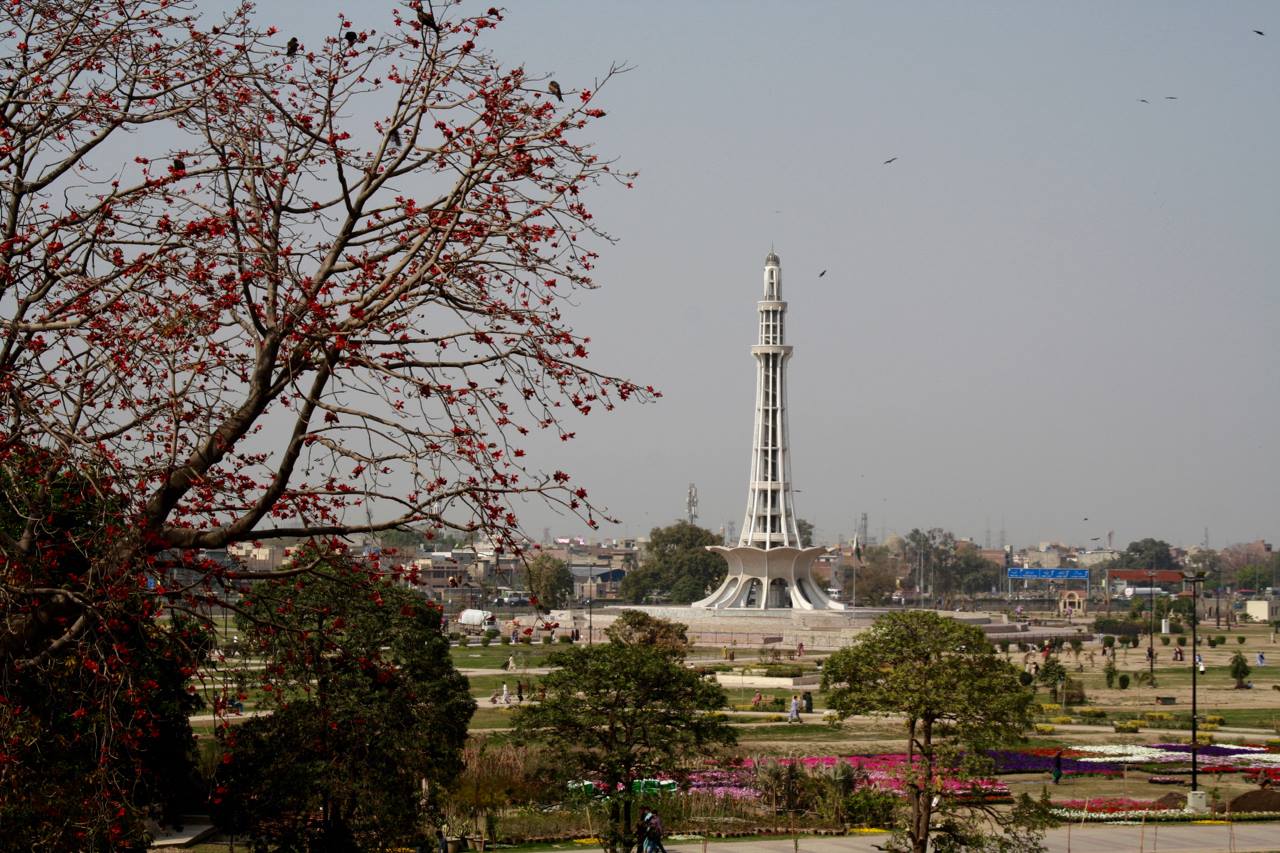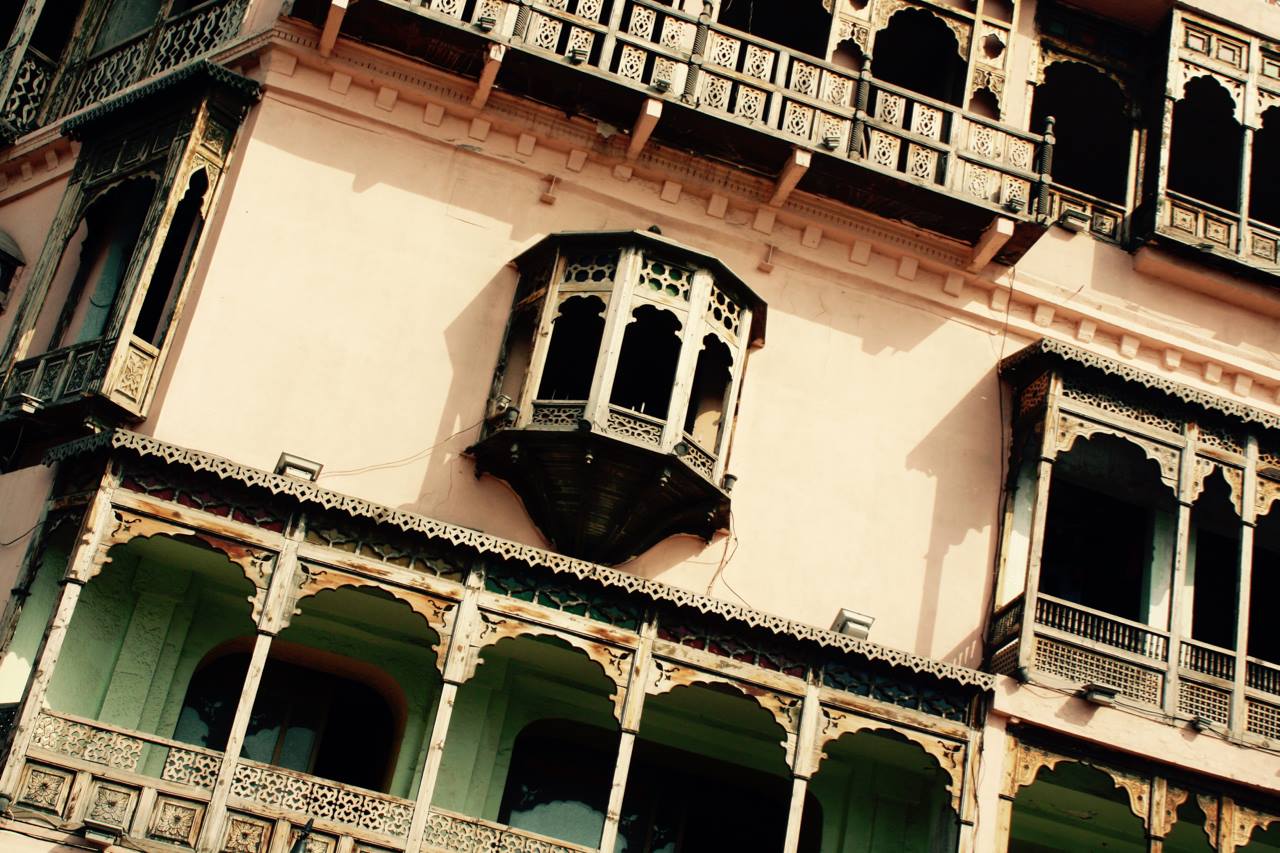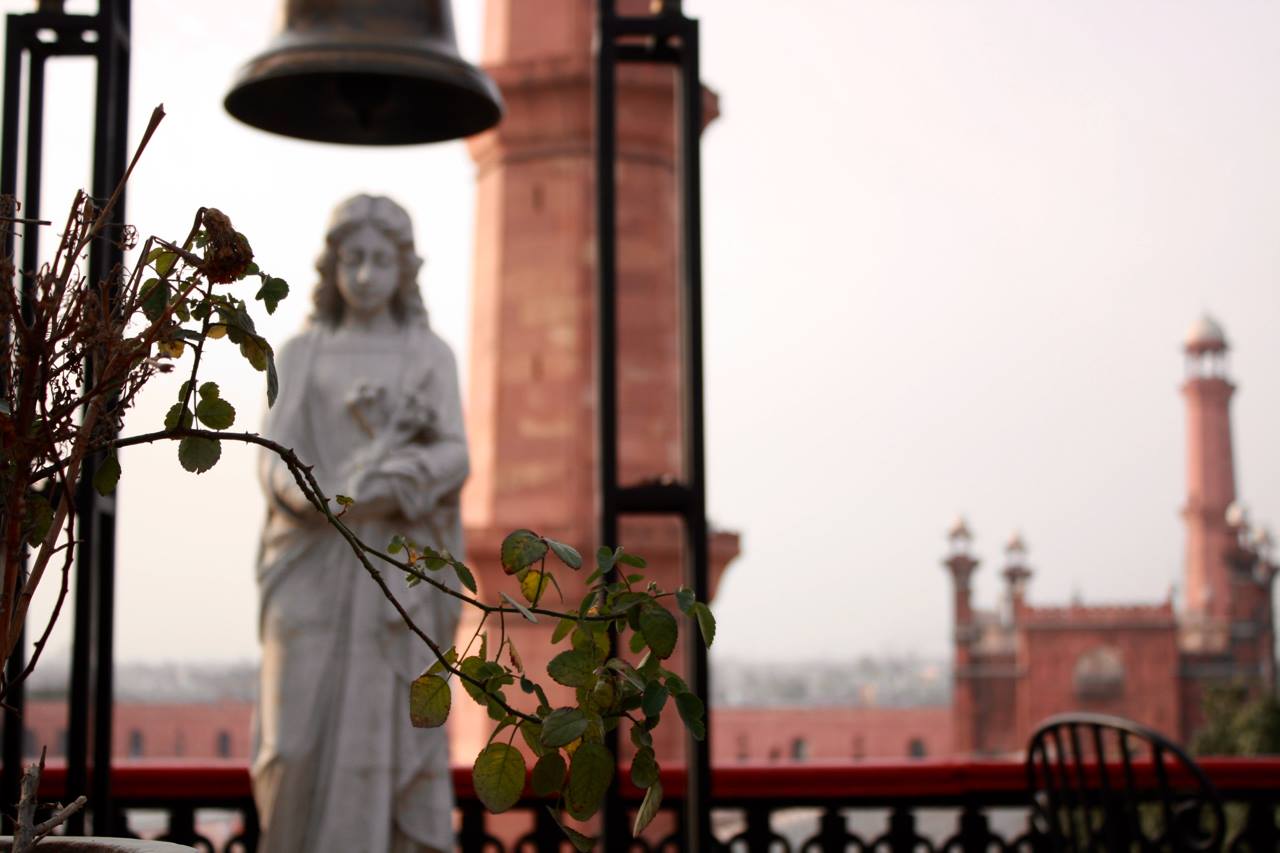We spent yesterday visiting Jahangir’s Tomb and the Badshahi Mosque. Both are made of Lahore’s distinctive red sandstone, imposing in their scale, and harmonious in how they combine restraint with rhapsody. Jahangir, son of Akbar, was the fourth Mughal emperor to rule over the subcontinent. The construction of the mausoleum where he was eventually buried is mostly attributed to his son Shah Jahan, but many say it was, in fact, the vision of his wife Nur Jahan. It took 10 years to build, from 1627 to 1637. The exterior of the mausoleum is simple but its interior is alive with gorgeous frescoes, tile mosaic and marble work.
The tomb’s white, inlaid marble is exquisite. There is something sacred about the incredible amount of work it took to carve out and embed each petal and leaf with just the right shade or pattern of veined precious stone in order to create the most delicate, flowering arabesques. Heart-achingly beautiful calligraphy takes the form of black-marble inlay and expresses the ninety-nine names of Allah, in line with Islamic mystic traditions. A stunning visual poem, if ever there was one.
The Badshahi Mosque was built by Emperor Aurangzeb (1671-1673). It remained the largest mosque in the world for more than 300 years. Here too we find balance and symmetry, a rootedness that is expansive and serene. But again, there is the counterpoint of passageway opening onto passageway for what seems like eternity, of arches and windows affording us a million different angles, perspectives and points of view, of reflections on polished marble floors that continue to mirror reality forever. Not so simple and straightforward after all.
Lunch at Cuckoo’s Den in what used to be Lahore’s red light area.

